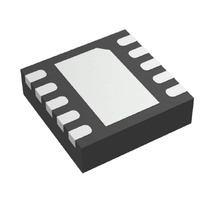Manufacturer Part Number
TPS62302DRCR
Manufacturer
Texas Instruments
Introduction
The TPS62302DRCR is a high-efficiency, synchronous step-down DC/DC converter designed by Texas Instruments, ideal for battery-powered applications.
Product Features and Performance
High-efficiency, synchronous step-down DC/DC converter
Fixed output voltage of 1.6V
Supports input voltages from 2.7V to 6V
Delivers up to 500mA output current
3MHz switching frequency for compact solution size
Synchronous rectification for improved efficiency
Operates over a -40°C to 85°C temperature range
Product Advantages
High conversion efficiency optimizes battery life
Compact package size ideal for space-constrained applications
Fast switching frequency allows for small external components
Wide input voltage range supports various power sources
Low external component count reduces system cost
Key Technical Parameters
Voltage Input (Min): 2.7V
Voltage Input (Max): 6V
Voltage Output (Min/Fixed): 1.6V
Current Output: 500mA
Frequency Switching: 3MHz
Operating Temperature: -40°C ~ 85°C
Quality and Safety Features
Built-in thermal shutdown protection
Overcurrent protection enhances safety under abnormal conditions
Compatibility
Compatible with a wide range of input voltages and battery technologies
Suitable for surface mount technology (SMT) assembly processes
Application Areas
Mobile phones and personal digital assistants (PDAs)
Wireless LAN devices and GPS systems
Portable media players and digital cameras
Product Lifecycle
Currently active product status
Not nearing discontinuation, ensuring long-term availability
Replacements or upgrades available in the TPS623xx series
Several Key Reasons to Choose This Product
Delivers efficient power conversion, extending battery life in portable devices
High-frequency operation allows the use of small, low-cost inductors and capacitors
Synchronous rectification offers higher efficiency compared to traditional diode solutions
Texas Instruments' reputation for quality and reliability
Broad application potential and long-term availability support future scalability and maintenance



 tps62302drcTexas Instruments
tps62302drcTexas Instruments TPS62293TDRVRQ1Texas InstrumentsIC REG BUCK 1.8V 1A 6SON
TPS62293TDRVRQ1Texas InstrumentsIC REG BUCK 1.8V 1A 6SON